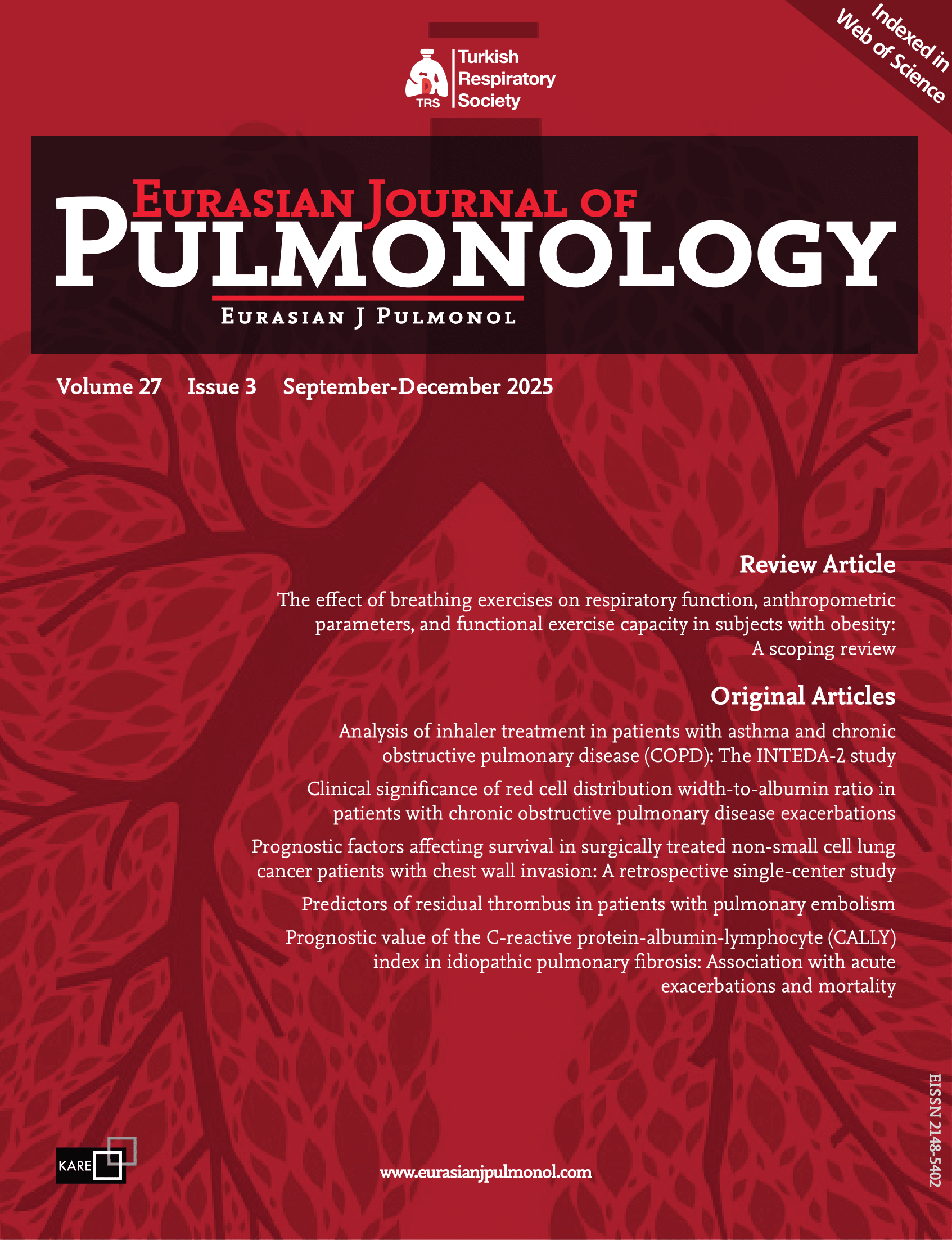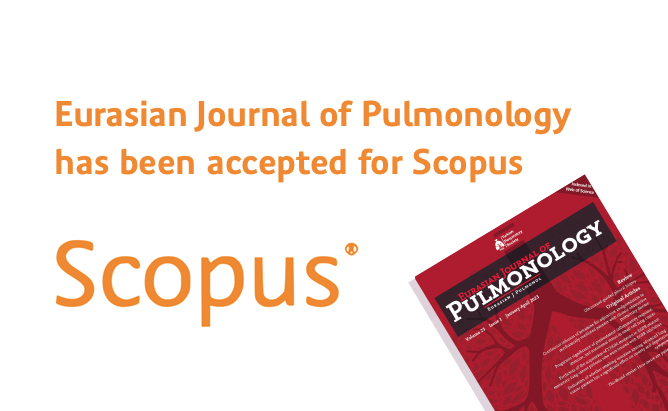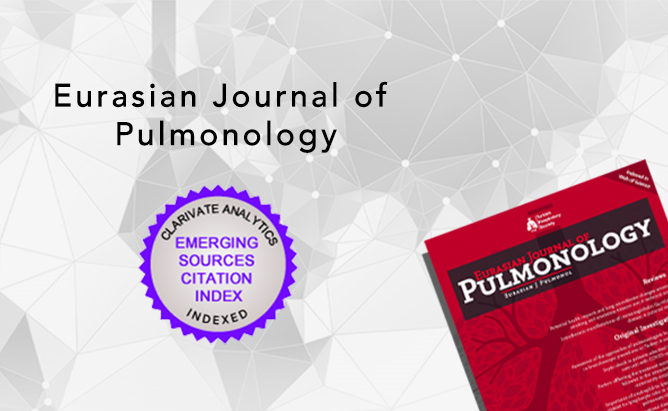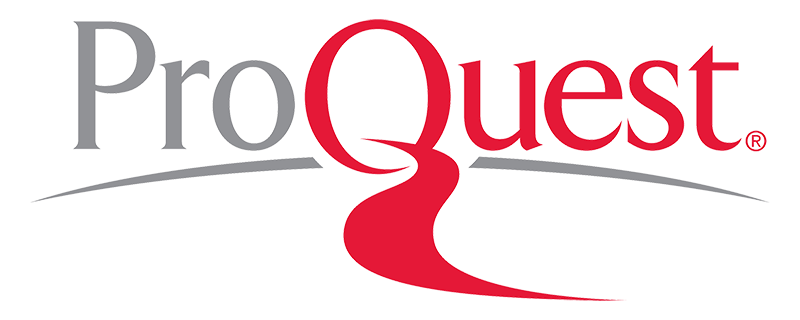2Department of Biochemistry, Faculty of Medicine, Tekirdag Namik Kemal University, Tekirdag, Türkiye
3Department of Thoracic Surgery, Faculty of Medicine, Tekirdag Namik Kemal University, Tekirdag, Türkiye
Abstract
BACKGROUND AND AIM: The CRP-albumin-lymphocyte (CALLY) index, which combines C-reactive protein (CRP), albumin, and lymphocyte values, serves as a predictive tool for patients with cancer and inflammatory diseases. However, the CALLY index has not been evaluated for its application in idiopathic pulmonary fibrosis (IPF). This study examined the relationship between CALLY scores and acute exacerbations, mortality, and lung function assessment results in patients with IPF.
METHODS: A total of 129 IPF patients diagnosed between January 2020 and December 2023 were studied by reviewing demographic information, test results, and pulmonary function assessments. Patients were enrolled from both outpatient and inpatient services at a single tertiary center. The CALLY index was calculated using the formula: albumin (g/dL) / [CRP (mg/dL) × NLR], with NLR representing the neutrophil-to-lymphocyte ratio. Data on acute exacerbations of IPF (AE-IPF) and all-cause mortality were obtained from longitudinal follow-up records. Participants received follow-up care for a median of 36 months (range: 6-48 months).
RESULTS: Of the 129 patients analyzed, 30 (23.3%) died and 10 (7.8%) experienced AE-IPF during follow-up. The CALLY index was significantly lower in patients with AE-IPF compared to those without (1.41±1.58 vs. 3.48±3.93, p=0.012), and similarly lower in deceased patients compared to survivors (1.85±2.11 vs. 3.79±4.14, p=0.014). Receiver operating characteristic (ROC) curve analysis demonstrated fair discriminatory capacity of the CALLY index for AE-IPF (area under the curve [AUC]: 0.72, cut-off: 0.66, sensitivity: 50.0%, specificity: 85.0%) and mortality (AUC: 0.69, cut-off: 1.19, sensitivity: 58.0%, specificity: 76.0%). The Gender-Age-Physiology (GAP) index showed comparable performance, with AUCs of 0.73 for AE-IPF and 0.75 for mortality, and no significant difference between the two indices (p=0.88 for AE-IPF; p=0.45 for mortality). Among pulmonary function parameters, only diffusing capacity of the lung for carbon monoxide (DLCO%) showed a significant positive correlation with the CALLY index (r=0.265, p=0.0024).
CONCLUSIONS: The CALLY index provides an effective method to evaluate functional deterioration and adverse outcomes in IPF patients while serving as a useful predictive instrument. The CALLY index offers a prognostic value similar to the GAP index using standard laboratory tests. Additional prospective validation studies should be conducted.




 Nevin Fazlıoğlu1
Nevin Fazlıoğlu1 




